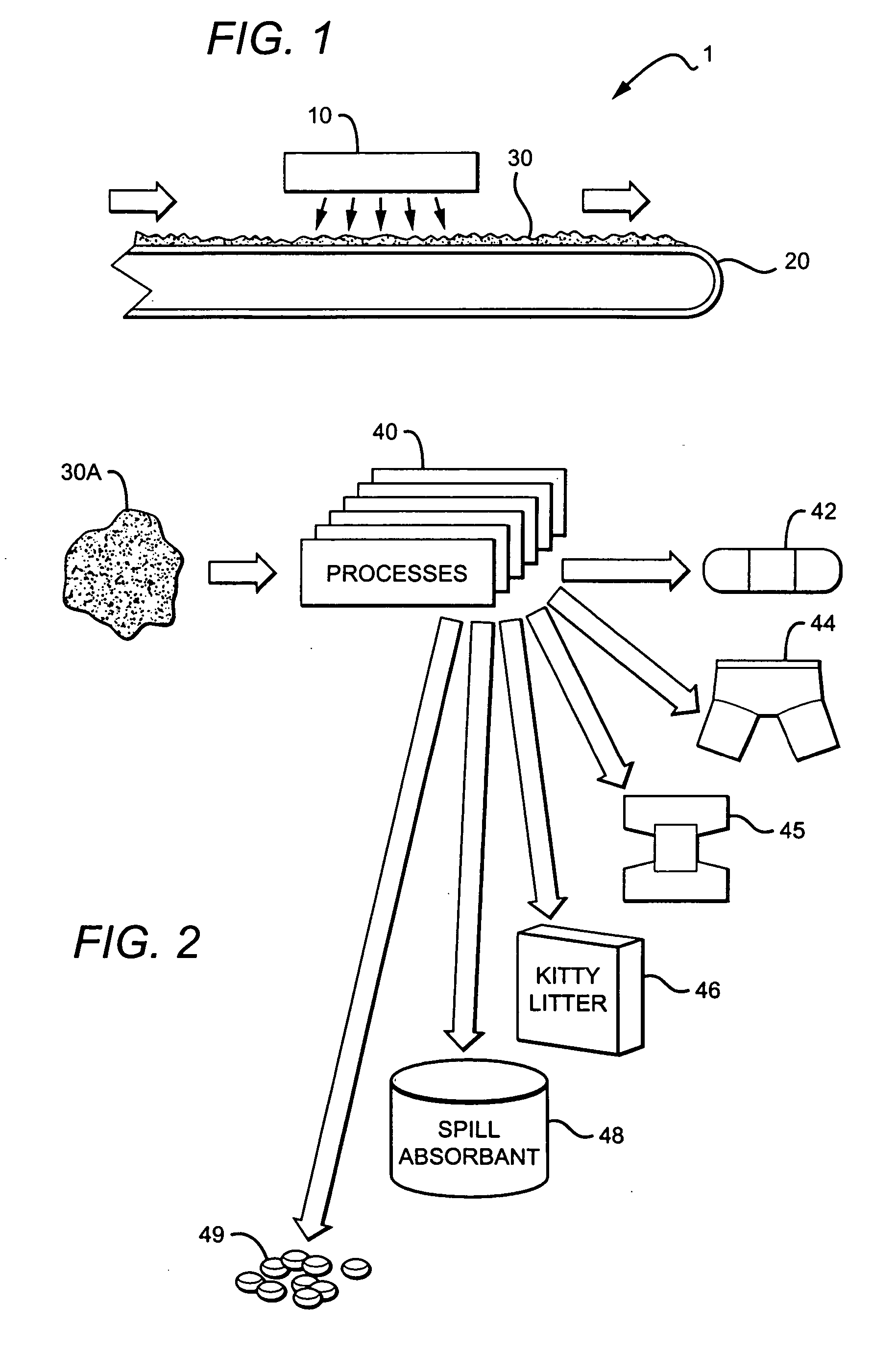Irradiated absorbent materials
- Summary
- Abstract
- Description
- Claims
- Application Information
AI Technical Summary
Benefits of technology
Problems solved by technology
Method used
Image
Examples
Embodiment Construction
[0014] In FIG. 1 a conveyor belt 20 is passing a load of polymer particles 30 past a high energy source 10 (such as a plasma or UV tube).
[0015] In more general terms, any suitable polymer particles are activated using radiation from any suitable high energy source. This is preferably done under conditions sufficient to open multiple covalent bonds on at least some surfaces by a length of at least one angstrom, and sufficient to increase the water absorbency of the activated (irradiated) polymer by at least 20% on a wt / wt basis relative to the non-activated (non-irradiated) polymer. Of course, in preferred embodiments, irradiation of the polymer particles increases their water absorbency by at least 50%, and even higher.
[0016] A wide range of polymers are contemplated for use in the invention, including glucosidics, acrylics, acrylic acid copolymers, polyacrylamide / acrylic acid copolymers, starch, carboxymethyl cellulose, carboxymethyl cellulose gum and sulphonated cellulose. Prefe...
PUM
| Property | Measurement | Unit |
|---|---|---|
| Fraction | aaaaa | aaaaa |
| Diameter | aaaaa | aaaaa |
| Energy | aaaaa | aaaaa |
Abstract
Description
Claims
Application Information
 Login to View More
Login to View More - R&D
- Intellectual Property
- Life Sciences
- Materials
- Tech Scout
- Unparalleled Data Quality
- Higher Quality Content
- 60% Fewer Hallucinations
Browse by: Latest US Patents, China's latest patents, Technical Efficacy Thesaurus, Application Domain, Technology Topic, Popular Technical Reports.
© 2025 PatSnap. All rights reserved.Legal|Privacy policy|Modern Slavery Act Transparency Statement|Sitemap|About US| Contact US: help@patsnap.com

